~ About Kiger Mustangs ~
The Kiger Mustang was developed in the late 1970s. It was created under the BLM wild horse program under the careful watch of E. Ron Harding, William (Bill) Phillips, and Josh Warburton. The basis of the Kiger Mustang is the Spanish Type Mustang, which are still found in small pockets throughout the Oregon desert in the southeast corner of the state. In 1979, priority for dun factor and particular Spanish traits were mandated for those horses that would become the Kiger.
The Kiger Mustang is generally a medium size horse, ranging from 13.2 hands to 16 hands, with a preferred height of 14-15.2 hands.
Kiger Mustangs are versatile mounts and can be trained to perform just about any equine sport. They are only limited by their training and rider's skill level. Kiger Mustangs generally have an easy ability to change gears and get down to the work at hand. It is not unusual for Kiger Mustangs to participate in cattle sorting on Friday, attend a Western Pleasure show on Saturday, and do an Endurance ride on Sunday. The Kiger Mustang has a very willing mind and is generally easy to train.
The Kiger Mustang can come in many different colors including: dun, grulla, red dun, bay, black, and claybank. The Kiger Mustang should have dun factor and other characteristics expressed.
DUN MARKING FACTORS: Dorsal, leg barring, lacing, cobwebbing on face, mask on face, fishbone/sawtooth on dorsal, eye bars, arm bars, hock barring, ventral dorsal, fawn in ears, black outline on ears, barring on back of ears, bi-coloring in mane/tail.
OTHER CHARACTERISTICS: Chest hair banding.
Examples of Dun Factor and Other Characteristics of the Kiger Mustang
Leg Barring
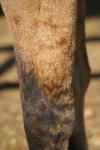
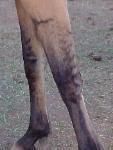
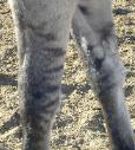

Eye Marks
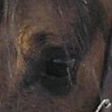

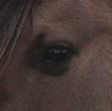
Ear Bars & Outlines, Fawn in Ear




Ventral Stripe

Dorsal Stripe




